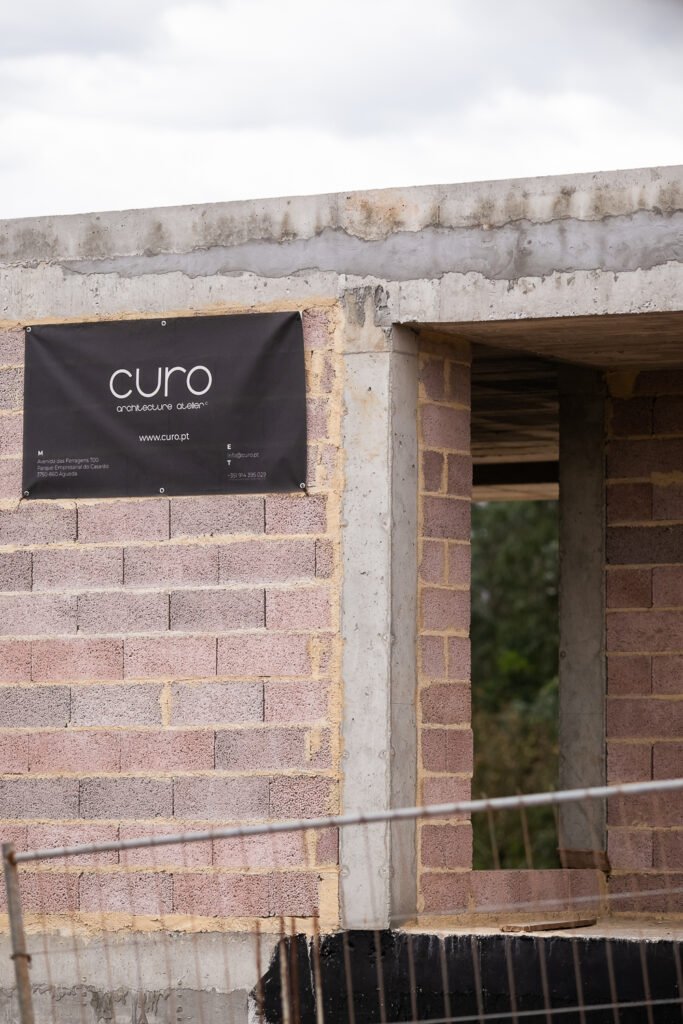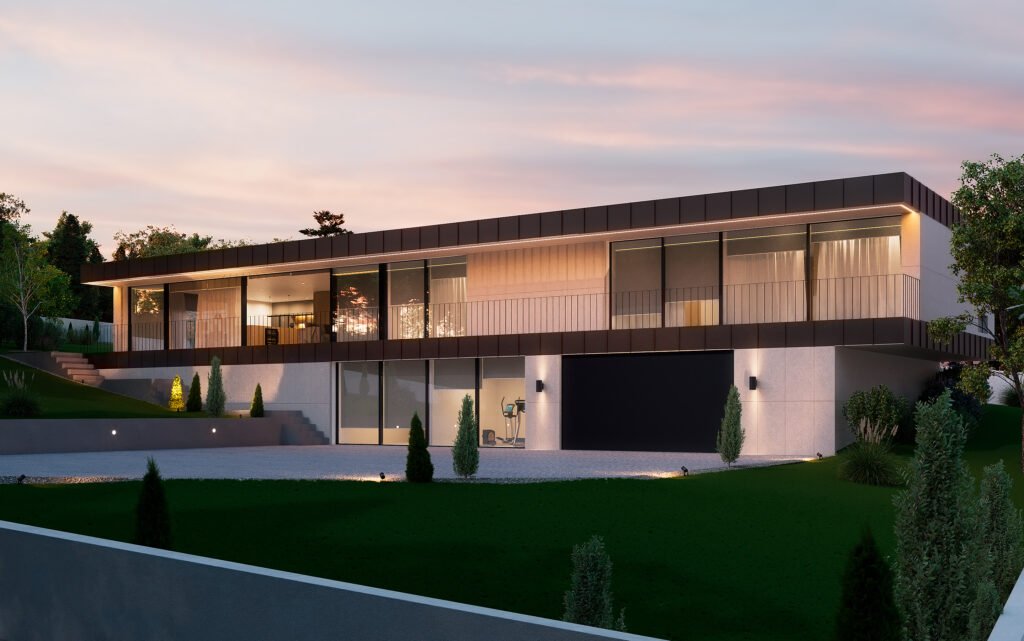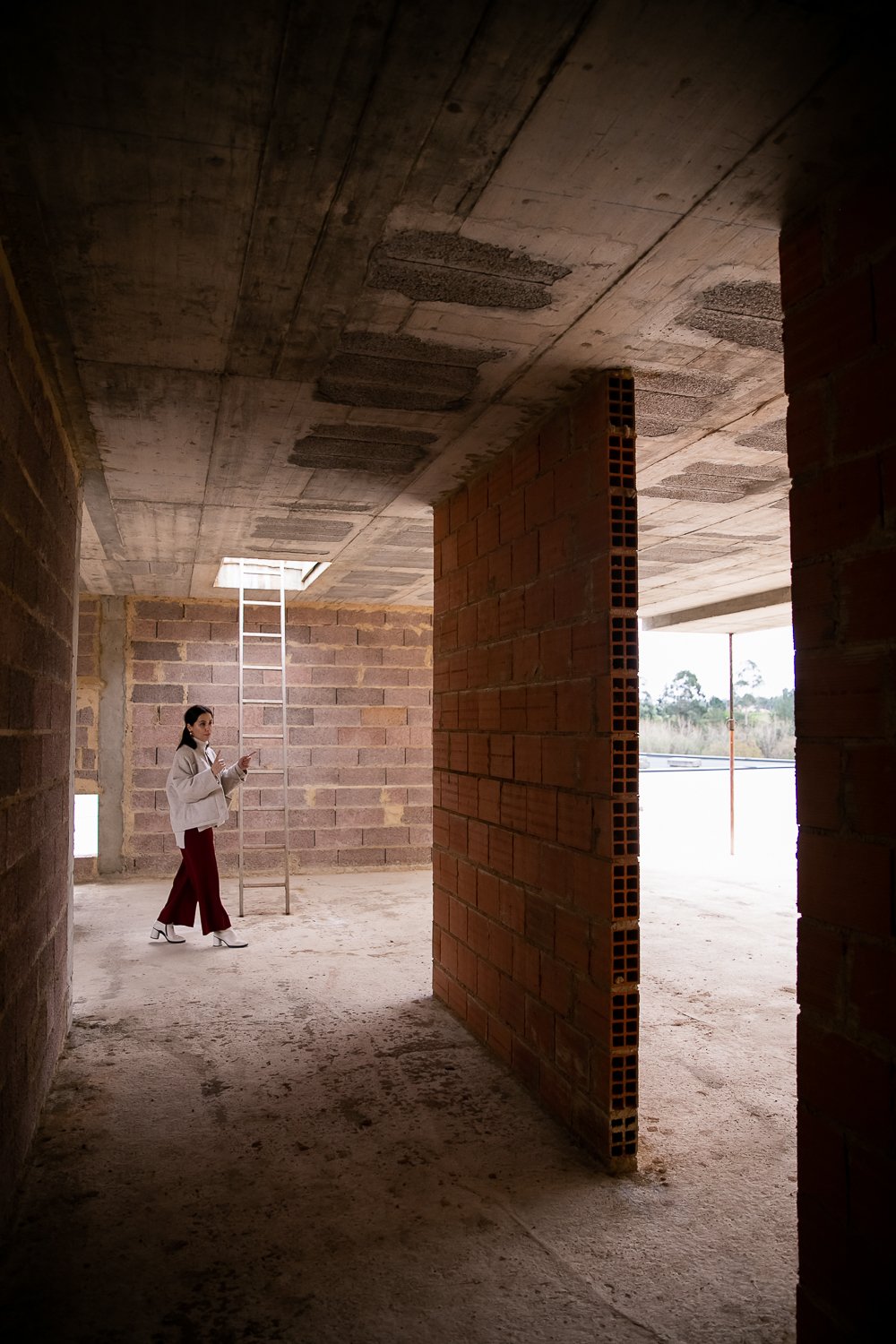Building your dream home from the ground up in Portugal might feel like a faraway dream, but trust me—it’s more within reach than you think. If you’ve pictured yourself choosing every detail, from the living room layout to the color of the windows, this guide is for you. Step by step, I’ll show you everything you need to know: land, permits, costs, timelines, and even insider tips from an architect to save you from headaches.
Why build your dream home from the ground up in Portugal?
A lot of people ask: is it worthwhile to build rather than buy?
The truth is, building from the ground up gives you a level of freedom no second-hand house can. You’re the one who decides everything—the layout, the architectural style, the materials, and even the little details that transform daily life (a bigger kitchen, more natural light, solar panels…).
This does not mean that it is better or worse than buying a ready-built house. After all, each choice has its pros and cons. Constructing from the ground up provides greater control and customisation, whereas purchasing a finished home and refurbishing pode ser mais rápido e menos stressante.
Besides that:
- A new house can be more energy-efficient.
- You can adapt the project to your real needs more easily.
- In the medium to long term, you may save money, as there will be fewer renovation costs.
Essential steps to build your house from scratch in Portugal
Building isn’t just about laying bricks. The process has several stages you should know about so you won’t be caught off guard.
1. Choosing the right plot
It’s not enough to like the view or the location. You need to check:
- Which category the land falls under in the Plano Diretor Municipal (PDM).
- Whether it has easy access (road, electricity, water, sewage).
- The slope and soil type (a 'difficult' plot can increase costs).
2. Hiring an architect and an engineer
The architect is the one who will turn your dream into a project, but their role goes far beyond just 'drawing plans.' A good architect helps you think about the space in a functional, aesthetic, and sustainable way. They ensure that your house is not only beautiful on paper but also comfortable and efficient in everyday life.
In addition, the architect handles the bureaucratic process with the City Council, ensures that the project complies with urban planning regulations, and can even oversee the construction to prevent costly mistakes.
The engineer, on the other hand, focuses on the structural side: calculating foundations, concrete, safety, and material strength. In Portugal, both the architect and the engineer are mandatory for new-build projects.
3. Projects and permits
Before building, you need to submit the architectural project to the City Council. This is where fees and timelines come in, and they vary from one municipality to another.
And yes, it’s possible that the project will be rejected. This happens when it doesn’t comply with the rules of the Plano Diretor Municipal (PDM), when it exceeds the permitted building indexes for the plot, or if it doesn’t comply with environmental or heritage restrictions.
That’s why it’s essential to have an architect leading the process: they already know how to interpret local regulations and can adapt the project to increase the chances of approval.
After the architectural project is approved, there are still the technical projects (structures, water, electricity, gas, acoustics, etc.), which also need to be submitted and validated.
If you want a swimming pool, an underground garage, or any other extra feature, additional permits may also be required.

4. Budget and average costs
In 2025, the average construction cost ranges between 1.000 € and 1.500 € por m², depending on the location, project complexity, and selected finishes.
For tax assessment purposes, the State applies an average value that does not represent real market costs. In 2025, this value is 532 €/m², plus 25% (land value), leading to a total of 665 €/m². Meanwhile, the page of the Santander mentions an average of €950 to €1,500/m² for traditional construction, while on the portal Habitissimo, when requesting quotes for 'turnkey' construction, the average values are around 1 500 €/m², with regional variations.
The North of Portugal tends to be cheaper than Algarve or Grande Lisboa, where labor and land are more expensive. But beware: these figures are only a reference point.
Costs can vary considerably if you choose to:
- Luxury materials and finishes (marble, fine woods, integrated technology, high-end kitchens).
- More qualified professionals, with experience in high-level projects.
- Sustainable solutions, such as solar panels, rainwater harvesting systems, or enhanced insulation.
You should also plan for unexpected expenses. It’s advisable to always set aside a margin of 10 to 15% of the total budget for extra expenses that may arise during construction.
5. Choosing the contractor and supervising the construction
Don’t choose just by the lowest price. A cheap contractor may end up finishing the work late, with lower-quality finishes, or even structural problems.
Before signing the contract, do this:
- Visit previous works:see the projects the contractor has already completed.
- Speak with former clients:ask about deadlines, quality, and communication.
- Detailed contract:make sure it includes timelines, penalties for delays, work guarantees, and all contracted services.
- Continuous supervision:monitor the construction regularly; it is also mandatory to obtain the building permit and to ensure everything is executed according to the project, from materials to finishes.
Keep in mind: constructing from the ground up provides freedom but also demands continuous attention. Rigorous oversight helps avoid unforeseen issues and guarantees that your house will be built exactly as designed.
6. Construction step by step
- Foundation and structure
- Walls and roof
- Installations (electricity, plumbing, HVAC)
- Finishes and coverings
7. Final inspection and occupancy permit
When the construction is completed, the City Council carries out the final inspectiona technician will check whether the house was built according to the approved project and whether it complies with all safety, habitability, and urban planning regulations.
Only after this inspection is approved and the required documents are submitted will you receive the occupancy permit. Without this document:
- You cannot legally live in the house;
- You cannot sell the property;
- You cannot permanently connect essential services such as water, electricity, and gas.
A few important points to keep in mind:
- Small adjustments may be required:sometimes the City Council requests minor corrections before issuing the permit.
- Complete documentation:you must provide all specialty projects, material certificates, and reports from the required professionals.
- Issuance timeframe:this can vary from municipality to municipality—normally a few weeks after the inspection, but it’s best to allow some extra time.
Having the architect or engineer oversee this phase is essential, as they make sure everything is in order and prevent issues that could delay the permit.
How much does it cost to build a house from scratch in Portugal in 2025?
Here’s a realistic overview:
- Land: varies greatly (you might pay €20,000 in the countryside or €300,000 near Lisbon).
- Project + municipal fees: between €5,000 and €15,000.
- Construction: €1,000 to €1,500/m².
- Extra costs (permits, inspections, utility connections): €10,000 to €30,000.
Practical example: a 150 m² house may cost between €200,000 and €300,000excluding the land.

How long does construction take?
Normally, between 12 and 24 monthsdepending on:
- Project approval time by the City Council (sometimes this is the longest part).
- Weather (rain delays construction).
- Availability of contractors.
If you plan well and have an organized team, you can get close to 12–15 months; however, due to the growing demand for construction, timelines are getting longer and longer.
CURO’s tips to avoid headaches
- Don’t choose just based on the contractor’s lowest price
- Always ask for detailed quotes and compare item by item.
- Think about sustainability: solar panels, good insulation, efficient windows.
- Create extra storage space. Trust me, it’s never too much!
- Let natural light in.
Count on CURO
Constructing a home from the ground up in Portugal demands planning, patience, and investment, yet the outcome is a residence tailored to your needs. By following this guide, you can avoid common mistakes and achieve not only a house but also the realisation of a dream
If you’re thinking about taking this step, start looking for land now and talk to our teamYour future self will thank you.

